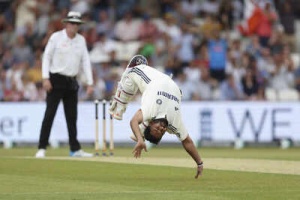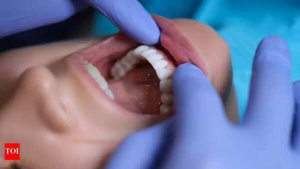Prediabetes is a condition characterized by elevated blood sugar levels, higher than normal but not yet meeting the threshold for a diabetes diagnosis. Early detection is crucial as the condition is often reversible. With appropriate dietary adjustments and regular exercise, individuals can often restore their blood sugar to healthy levels within a few months. While a blood test provides definitive confirmation, the body frequently exhibits subtle signs indicating elevated blood sugar, warranting medical evaluation. Here are five such indicators:

One of the earliest manifestations of high blood sugar is an unquenchable thirst. When glucose levels surge, the kidneys attempt to filter out excess sugar by producing more urine. This, in turn, leads to more frequent urination and potential dehydration.
Dehydration exacerbates the issue, creating a cycle of persistent thirst despite regular fluid intake. If you find yourself constantly reaching for water and making frequent trips to the bathroom, it could signal rising blood sugar levels.
Experiencing chronic fatigue, even after adequate rest, can be an alarming symptom. High blood sugar disrupts the body's ability to effectively utilize glucose for energy.
When cells are deprived of sufficient glucose, feelings of weakness and exhaustion may ensue. This fatigue differs from typical tiredness; it is unrelenting and may manifest as difficulty concentrating or daytime sleepiness. If persistent fatigue plagues you, a medical check-up is advisable.

Prediabetes can sometimes manifest on the skin. The appearance of dark, thickened, and velvety patches, particularly on the back of the neck, underarms, or groin, is a condition known as acanthosis nigricans.
These patches arise due to elevated insulin levels in the blood, a common characteristic of prediabetes. If you observe such skin changes, especially if they develop rapidly or worsen, it signifies potential difficulties in blood sugar control.
Elevated blood sugar impairs the body's natural healing mechanisms. If minor cuts or bruises seem to linger and take an extended period to heal, it could be indicative of prediabetes.
High blood sugar compromises the immune system and can reduce blood flow to the skin, impeding the healing process and increasing the susceptibility to infections. Protracted wound healing warrants medical attention.
Individuals with prediabetes often experience heightened hunger, even shortly after meals. This occurs because cells are not receiving adequate glucose for energy, prompting the brain to signal for more food intake, even in the absence of true hunger.
This increased appetite can lead to overeating and subsequent weight gain, further complicating blood sugar management. Persistent hunger or cravings, especially for sugary and starchy foods, may be the body's way of signaling an underlying issue.
Disclaimer: This article serves informational purposes only and does not substitute professional medical advice. Always consult a qualified healthcare provider for any health concerns.
Newer articles
Older articles
 Greg Chappell: Rishabh Pant is Revolutionizing Cricket with Unorthodox Style
Greg Chappell: Rishabh Pant is Revolutionizing Cricket with Unorthodox Style
 Najmul Hossain Resigns as Bangladesh Test Captain After Sri Lanka Defeat
Najmul Hossain Resigns as Bangladesh Test Captain After Sri Lanka Defeat
 Earth's Mantle Unleashes Volcanic Fury, Carving New Ocean in Africa
Earth's Mantle Unleashes Volcanic Fury, Carving New Ocean in Africa
 Smith Targets Test Return After Baseball Cage Rehab in New York
Smith Targets Test Return After Baseball Cage Rehab in New York
 Rishabh Pant's Somersault Celebration Draws "Unnecessary" Remark From Doctor Who Aided Recovery
Rishabh Pant's Somersault Celebration Draws "Unnecessary" Remark From Doctor Who Aided Recovery
 Is Daily Bowel Movement Necessary? When Irregularity Signals a Health Issue
Is Daily Bowel Movement Necessary? When Irregularity Signals a Health Issue
 Shimron Hetmyer's Last-Gasp Six Stuns MI New York, Seals Record MLC Chase for Seattle Orcas
Shimron Hetmyer's Last-Gasp Six Stuns MI New York, Seals Record MLC Chase for Seattle Orcas
 Oral Cancer: Spotting the Signs, Understanding the Risks, and Why Early Detection is Key
Oral Cancer: Spotting the Signs, Understanding the Risks, and Why Early Detection is Key
 India's First Dengue Vaccine Nears Finish Line: Phase 3 Trials Show Promise
India's First Dengue Vaccine Nears Finish Line: Phase 3 Trials Show Promise
 Asia Cup 2025: ACC Reportedly Targets September Start Amid Rising Hopes, Aims for Schedule Release Next Month
Asia Cup 2025: ACC Reportedly Targets September Start Amid Rising Hopes, Aims for Schedule Release Next Month